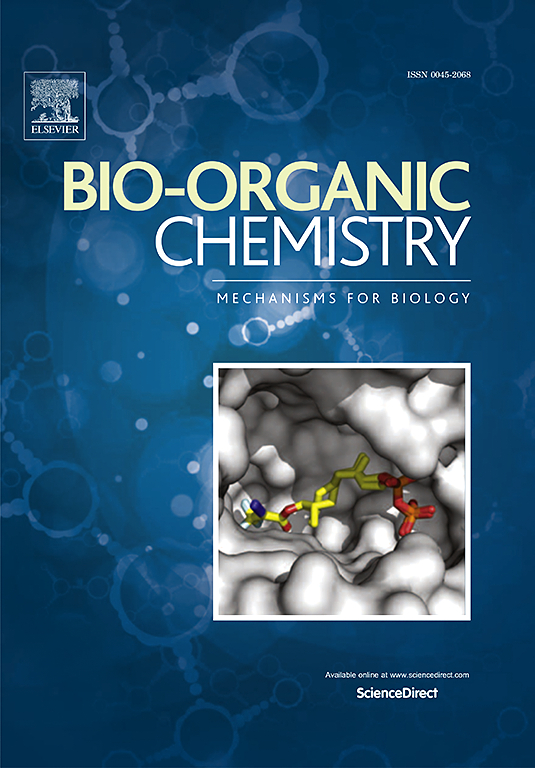一种能够实时监测TRPA1通道开闭状态的小分子荧光探针
IF 4.5
2区 医学
Q1 BIOCHEMISTRY & MOLECULAR BIOLOGY
引用次数: 0
摘要
瞬时受体电位锚蛋白1 (TRPA1)通道是神经回路中痛觉信号的重要介质,通过其独特的整合化学、热和机械刺激的能力,调节从哮喘到神经源性炎症的病理生理过程。实时监测TRPA1通道的构象动态对解剖TRPA1通道的作用具有重要意义。在这里,我们提出了一个小分子荧光探针FPTRP-1,具有与TRPA1门控状态直接相关的状态依赖的荧光特征。共聚焦成像验证了探针FPTRP-1对TRPA1通道具有高选择性,可实时监测TRPA1通道的开关状态,为进一步阐明TRPA1通道在生物系统中的生理病理作用提供了潜在的药理学工具。本文章由计算机程序翻译,如有差异,请以英文原文为准。

A small molecular fluorescence probe capable of real-time monitoring the open and closed states of TRPA1 channel
Transient receptor potential ankyrin 1 (TRPA1) channel serves as a critical mediator of nociceptive signaling across neural circuits, modulating pathophysiological processes from asthma to neurogenic inflammation through its unique ability to integrate chemical, thermal, and mechanical stimuli. Real-time monitoring conformational dynamics of TRPA1 is of significance for dissecting the roles of TRPA1 channel. Here, we present a small molecular fluorescence probe FPTRP-1 featuring a state-dependent fluorescence signature that directly correlates with TRPA1 gating status. Confocal imaging verifies that the probe FPTRP-1 has high selectivity for TRPA1 channel, and can monitor the on-off states of TRPA1 in real time, providing a potential pharmacological tool to further elucidate the physiological and pathological roles of TRPA1 channel in biological systems.
求助全文
通过发布文献求助,成功后即可免费获取论文全文。
去求助
来源期刊

Bioorganic Chemistry
生物-生化与分子生物学
CiteScore
9.70
自引率
3.90%
发文量
679
审稿时长
31 days
期刊介绍:
Bioorganic Chemistry publishes research that addresses biological questions at the molecular level, using organic chemistry and principles of physical organic chemistry. The scope of the journal covers a range of topics at the organic chemistry-biology interface, including: enzyme catalysis, biotransformation and enzyme inhibition; nucleic acids chemistry; medicinal chemistry; natural product chemistry, natural product synthesis and natural product biosynthesis; antimicrobial agents; lipid and peptide chemistry; biophysical chemistry; biological probes; bio-orthogonal chemistry and biomimetic chemistry.
For manuscripts dealing with synthetic bioactive compounds, the Journal requires that the molecular target of the compounds described must be known, and must be demonstrated experimentally in the manuscript. For studies involving natural products, if the molecular target is unknown, some data beyond simple cell-based toxicity studies to provide insight into the mechanism of action is required. Studies supported by molecular docking are welcome, but must be supported by experimental data. The Journal does not consider manuscripts that are purely theoretical or computational in nature.
The Journal publishes regular articles, short communications and reviews. Reviews are normally invited by Editors or Editorial Board members. Authors of unsolicited reviews should first contact an Editor or Editorial Board member to determine whether the proposed article is within the scope of the Journal.
 求助内容:
求助内容: 应助结果提醒方式:
应助结果提醒方式:


